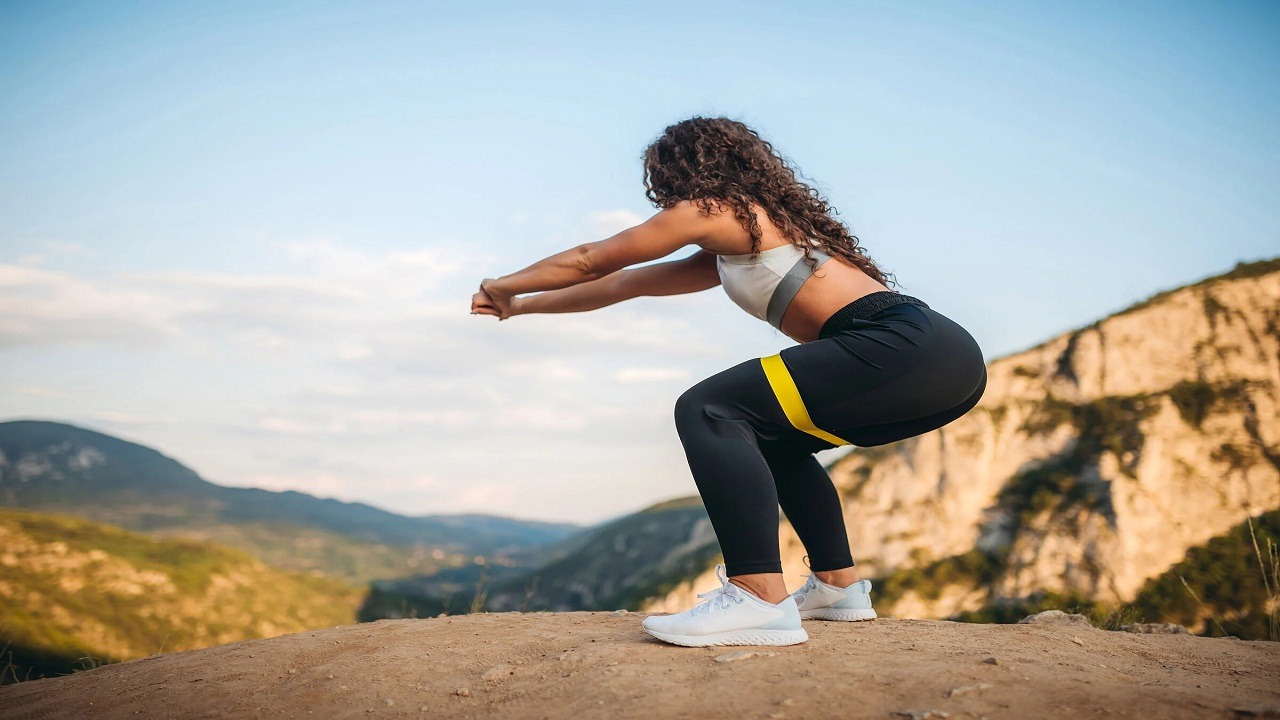6 Exercises for Healthy and Strong Hips
Contents
Our hips are the foundation of our movement. They connect our upper and lower bodies, allowing us to walk, run, squat, climb stairs, and navigate daily life with ease. Strong, healthy hips are essential for not only physical performance but also for preventing pain and injuries. For women in particular, strong hips can improve posture, balance, and even core stability.
This article dives into 6 Exercises for Healthy and Strong Hips specifically beneficial for women, targeting different aspects of hip health and strength. But before we jump into the exercises, let’s understand why strong hips are so important for women.
Related Article: 7 Best Butt Exercises To Get A Gorgeous Butt
Why Strong Hips Matter for Women:
- Reduced Risk of Injury: Strong hip muscles stabilize the pelvis and joints, reducing the risk of strains, sprains, and imbalances that can lead to pain. This is especially important for activities that put stress on the hips, such as running, dancing, and certain sports.
- Improved Posture and Core Stability: The hips connect directly to the core, and weak hip muscles can contribute to poor posture and an unstable core. This can lead to back pain, discomfort, and difficulty maintaining proper form during exercise.
- Enhanced Athletic Performance: Strong hips are crucial for powerful movements and efficient energy transfer throughout the body. Whether you’re a weekend warrior or a competitive athlete, strong hips can significantly improve your performance.
- Benefits During Pregnancy and Postpartum: Strong hips are essential for supporting the changes a woman’s body goes through during pregnancy and postpartum. Proper hip mobility can help alleviate lower back pain and discomfort during pregnancy, and aid in recovery after childbirth.
- Overall Well-being: Strong hips contribute to better balance, coordination, and flexibility. This can not only improve daily activities but also boost confidence and overall well-being.
The 6 Hip Heroes:
Now that we understand the significance of strong hips, let’s explore six exercises that target different aspects of hip health for women:
Glute Bridge:
- This foundational exercise strengthens the glutes, hamstrings, and lower back.
- Lie on your back with knees bent and feet flat on the floor, hip-width apart.
- Engage your core and lift your hips off the ground until your body forms a straight line from shoulders to knees.
- Squeeze your glutes at the top for a second before lowering your hips to the starting position.
- Aim for 3 sets of 10-15 repetitions with proper form.
Side-Lying Hip Abduction:
- This exercise targets the outer hip muscles (abductors) that contribute to hip stability and side-to-side movement.
- Lie on your side with your knees stacked and hips aligned.
- Prop yourself up on your forearm with your elbow directly under your shoulder.
- Lift your top leg up as high as comfortably possible, keeping your core engaged and your hips stacked.
- Lower your leg back down slowly and with control.
- Perform 3 sets of 10-15 repetitions on each side.
Clamshell:
- This exercise isolates and strengthens the gluteus medius, a key stabilizer of the hip joint.
- Lie on your side with knees bent and stacked, feet together, and hips aligned.
- Engage your core and lift your top knee a few inches off the ground, keeping your feet together.
- Rotate your top knee open while keeping your hips stacked. Imagine your heel is trying to draw a small circle on the ground.
- Slowly lower your leg back down with control.
- Perform 3 sets of 10-15 repetitions on each side.
Squat:
- The squat is a multi-functional exercise that works not only the hips but also the quads, hamstrings, glutes, and core.
- Stand with your feet shoulder-width apart, toes slightly pointed outward.
- Engage your core and keep your back straight as you lower your body as if you’re going to sit in a chair.
- Push your hips back and keep your knees tracking over your toes.
- Lower yourself down until your thighs are parallel to the ground (or as low as comfortably possible).
- Push through your heels to stand back up to the starting position.
- Aim for 3 sets of 10-15 repetitions, focusing on proper form.
Walking Lunges:
- Push through your front heel to return to the starting position and then repeat the lunge with the other leg.
- Maintain a tall posture and keep your core engaged throughout the movement.
- Perform 3 sets of 10 lunges per leg, or modify by doing stationary lunges if needed.
Pigeon Pose (Yoga):
This yoga pose offers a gentle stretch for the hip flexors, which can become tight from sitting for long periods.
- Start on all fours with your hands shoulder-width apart and knees hip-width apart.
- Slide one knee forward, bringing your foot underneath your chest.
- Extend your other leg straight back, keeping your hips square and your back straight.
- Gently lean forward, feeling a stretch in the front hip flexor.
- Hold for 30 seconds to 1 minute and then repeat on the other side.
Progression and Modifications:
As you gain strength and confidence in these exercises, you can progress them in several ways:
- Increase weight: Add weights like dumbbells or resistance bands to exercises like squats and lunges for an extra challenge.
- Increase repetitions/sets: Gradually increase the number of repetitions or sets you perform as you get stronger.
- Decrease rest time: Shorten your rest periods between sets to increase the intensity of your workout.
- Single-leg variations: Many of these exercises can be done with one leg at a time for an added challenge to your balance and core stability.
Important Considerations:
- Listen to your body: It’s important to start slowly and gradually increase the intensity of your workouts. Pay attention to any pain and stop if you experience discomfort.
- Warm-up and cool-down: Always perform a dynamic warm-up before your workout to prepare your muscles and a cool-down with static stretches afterwards to improve flexibility.
- Proper form is key: Focus on proper form over weight or speed. It’s better to perform the exercises with lighter weights and perfect form than to risk injury with heavier weights and improper form.
- Consult a professional: If you have any pre-existing injuries or conditions, consult with a healthcare professional or certified trainer before starting a new exercise program.
Conclusion:
Strong hips are essential for women’s overall health and well-being. By incorporating these six exercises into your routine, you can build strength, improve mobility, and reduce your risk of injury. Remember to start slowly, listen to your body, and focus on proper form. With dedication and consistency, you can achieve healthy, strong hips that will empower you in all aspects of your life.
Bonus Tip: In addition to the exercises listed above, consider incorporating activities like dancing, swimming, and hiking into your routine. These activities can be a fun and engaging way to improve hip health and mobility.
Disclaimer: This article is for informational purposes only and does not substitute for professional medical advice. Always consult with a healthcare professional before starting any new exercise program.
References
- Reference 1: American Council on Exercise. (2023, January 11). 6 Myths About Your Hips You Need to Stop Believing. ACE Fitness. https://www.acefitness.org/ This source provides general information on the importance of hip health and debunks common myths.
- Reference 2: Harvard Health Publishing. (2020, September 17). 14 Hip Exercises: For Strengthening and Increasing Mobility. Harvard University. https://www.health.harvard.edu/newsletter_article/more_strengthening_exercises This website offers a variety of hip exercises with detailed descriptions and modifications.
- Reference 3: Mayo Foundation for Medical Education and Research. (2023, February 10). Hip pain. Mayo Clinic. https://www.mayoclinic.org/symptoms/hip-pain/basics/definition/sym-20050684 This Mayo Clinic resource provides information on hip pain causes and treatments.
- Reference 4: The American Physical Therapy Association. (2023, January). Women’s Health. American Physical Therapy Association. https://www.apta.org/ This website provides information on various women’s health conditions, including those related to the hips.

